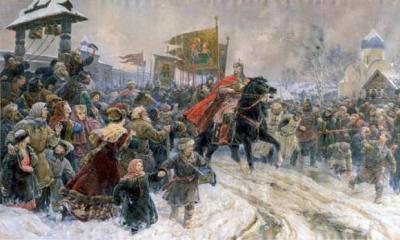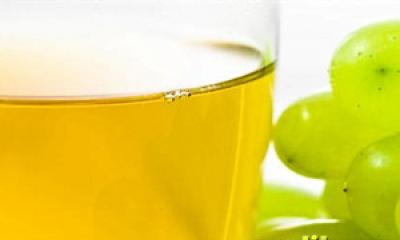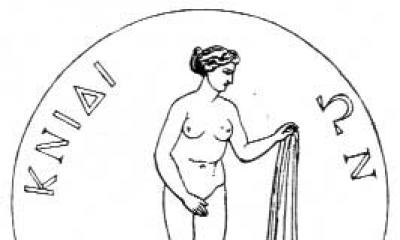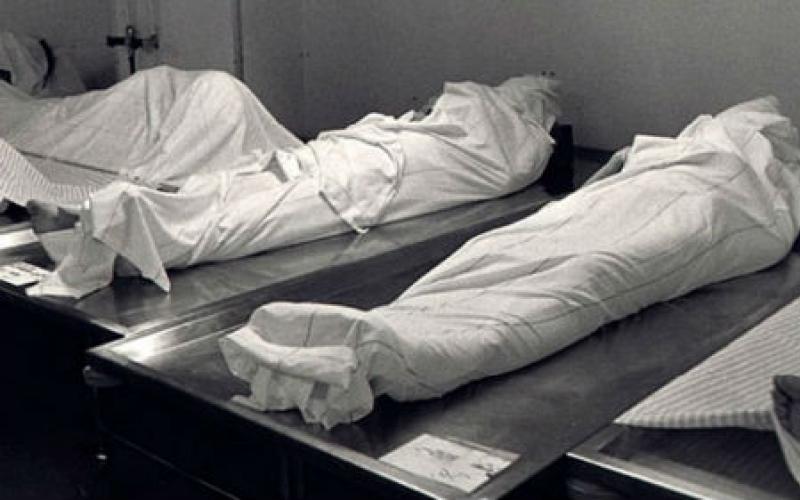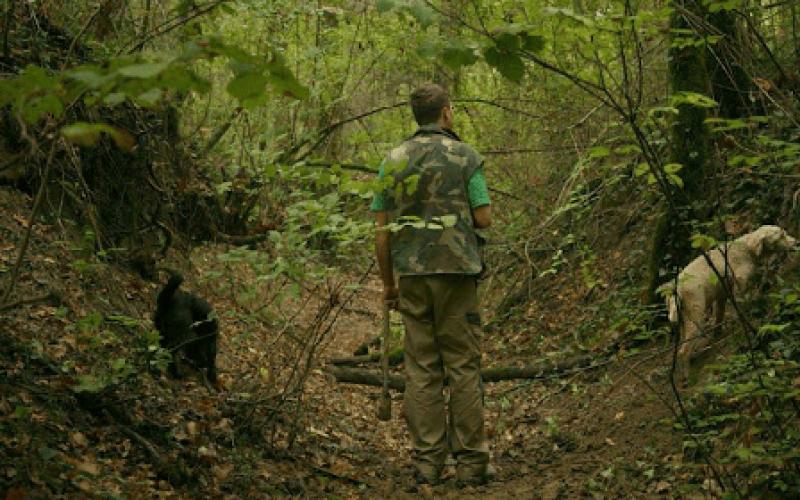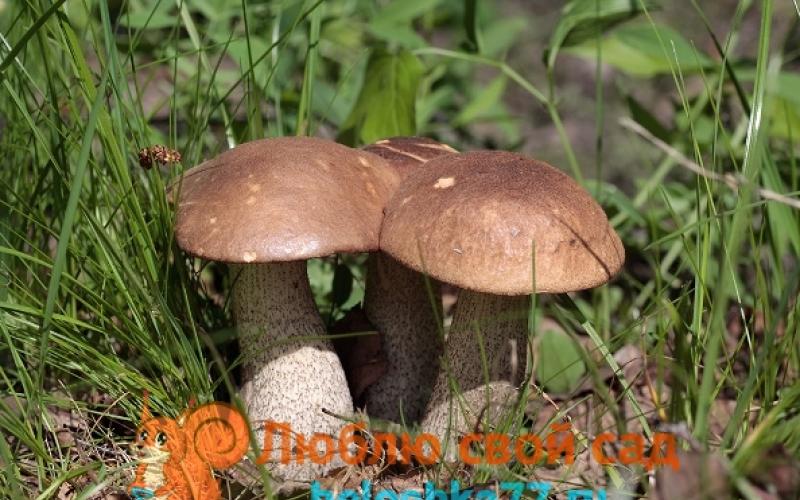White birch (Betula pubescens)- a tree with a height of 15-25 m has a trunk diameter of up to 80 cm. Young trees, which are often confused with alder, have a red-brown bark, which eventually acquires a snow-white color. The crown of a young birch is narrow, slender, with age it becomes wide and sprawling, with branches directed upwards. Fluffy birch grows in Siberian forests, in the European part of Russia, in Western Europe and in the Caucasus. The variety is winter-hardy, shade-tolerant, does not particularly need the sun. Prefers well-moistened soils, feels great in wetlands.
warty birch, or hanging (Betula pendula) distributed throughout the European part of Russia and beyond the Urals to the Ob River. One of the most popular birches, without which landscaping in Russia is indispensable. It is a tree up to 30 m high, with dark bark at the base of the trunk. The crown is openwork, elongated-oval in shape, with long drooping branches, on which small growths develop. The leaves are triangular-rhombic, on short petioles. It grows quickly, frost-resistant, undemanding to the soil, very photophilous, drought-resistant. In culture for a very long time. Seed germination is high. The cuttings take root weakly. It has several forms, of which the most decorative are: pyramidal (f. fastigiata) with a narrow pyramidal crown; mourning (f. tristis) with very thin weeping branches forming a rounded crown; Jung (f. Youngii) with an irregular, picturesque crown , with thin drooping branches; purple (f. purpurea) with purple leaves;
Very popular paper birch (Betula papurifera)- a tree up to 30 m high. Its bark is smooth, has a snow-white color, sometimes a pinkish tint. In this species, the leaves are quite large and elongated. If in warty and fluffy birches the bark becomes rough and deeply fissured over time, then in paper birch it is fashionably snow-white to the very surface and in adulthood. In its homeland of North America, this mighty tree impresses with a bright white trunk, on which yellowish-brown lentils stand out clearly.
Frost-resistant, unpretentious to soils, but more moisture-loving and shade-tolerant than warty birch. Despite the great similarity, both birches are so different from each other that they can be planted in joint groups. It is interesting for park construction in single, group and avenue plantings.
Dahurian birch, or black (Betula davurica Pall) grows throughout the Far East, Mongolia, Northern China, Japan, Korea. It is considered an indicator of soil suitability for agriculture. It grows in the lower part of the mountain slopes on deep and moist soils as an admixture in deciduous forests.
http://flower.onego.ru/kustar/ena_5385.jpg Tree up to 25 m tall with a wide spreading openwork crown. It is easily distinguished from other species by the original bark: in young trees it is pinkish or even slightly reddish, in old trees it is dark gray, sometimes even black-brown, cracking along. The birch bark periodically exfoliates and partially falls off, part of it remains hanging in shreds, giving the impression of curlyness. This attracts attention, but the tree should grow near the observer: by the path, bench, porch, and so on. From a distance of even one height, this sign is already hardly distinguishable.
The leaves are oval, dark green, yellow-brown in autumn. Blooms after the leaves open. Its growing season is shorter than that of other birches.
It is very photophilous and exacting to the soil, but is less exacting to soil moisture. Poorly tolerates pruning and transplanting, suffers from soil compaction. Deserves wide use in order to diversify the range of parks and forest parks. Looks good in clean and group through plantings in illuminated areas.
Cherry birch (Betula lenta L) very decorative North American look. It grows in the mountains in a mixture with other deciduous species, found in rocky habitats. Prefers deep, moist, well aerated soils.
Tree up to 25 m tall, in youth with a pyramidal crown, in adult plants with a rounded, hanging branches. The bark of the trunk is dark, cherry red. Young shoots slightly pubescent, later glabrous, red-brown. Its oblong-ovate, large, beautiful leaves are remarkable. When young, they are silky, pubescent, adults are bright green above, shiny, dull green below, pubescent along the veins; in autumn they become reddish-yellow, very showy. In spring, it attracts attention with abundant, long stamen catkins. This low tree grows slowly, but reaches an amazing age for birches - up to three hundred years. Winter hardiness is average (in severe winters it partially freezes over).
It grows rapidly when young and prefers deep, moist, well-drained soils. It can be recommended for wide use in alley, single and group plantings.
Note to gardeners: if you decide to plant a birchThe simple and touching beauty of the birch gives it a high aesthetic value. A slender, white-trunked, light-colored tree, which gives a translucent shade, adorning any rural view at any time of the year, is especially loved. Since ancient times, birch has been the image of Russia.
Birch branches adorn churches and dwellings on the Day of the Holy Trinity. Leaves give yellow wool dye with alum. Birches are good pollen-bearing plants. In the old days, a birch torch was considered the best for lighting peasant huts - it burns brightly and almost without soot.
Grove of drooping birches. © Percita
Birch (Betula) is a genus of deciduous trees and shrubs of the Birch family (Betulaceae). Birch is widespread in the Northern Hemisphere; on the territory of Russia is one of the most common tree species. The total number of species is over a hundred.
Many parts of birch are used in the economy: wood, bark, birch bark (surface layer of bark), birch sap. The buds and leaves are used in medicine. Some species are used to create shelterbelts, as well as in ornamental gardening.
Birch occupies an important place in the culture of the Slavs, Scandinavians, Finno-Ugric and other peoples.
Many species of birch are widespread and important forest-forming species, which largely determine the appearance and species composition of deciduous and coniferous-deciduous (mixed) forests in the temperate and cold parts of Eurasia and North America.
When we talk about birch, most often we mean the most common - drooping birch (Betula pendula). Other species names: warty birch, weeping birch, hanging birch. Previously, the name white birch (Betula alba) was also applied to it, but at present, in order to avoid confusion with downy birch, to which the name "white birch" was also applied, the name white birch is not desirable.
There are among the birches and shrubs. The best known of these is the dwarf birch (Betula nana), common in the tundras of Europe and North America and the mountain tundras of Siberia. It does not even reach 1 m in height. In the glacial and post-glacial period, this birch was distributed much further south, now it is found there in the swamps as a relic.
Large birch seedlings with an open root system, even planted at the right time, do not always take root - some of the trees die or their tops dry out. Therefore, it is better to buy seedlings with earthen clods or in containers. Winter planting with a frozen lump is possible.
Planting pits for birches are filled with a mixture of garden soil, humus, sand and peat in a ratio of 2: 1: 1: 1. When young birches are planted in spring, complex fertilizer (150–200 g) is added to the planting pit. For autumn planting, which is less preferable, phosphorus-potassium fertilizers are used.
FEATURES OF GROWING
Top dressing: In early spring and early summer, top dressing with nitrogen-containing fertilizers is required (mullein - 1 kg, urea - 10 g, ammonium nitrate - 20 g per 1 bucket of water). Autumn top dressing - Kemira-wagon or nitroammophoska.
Watering: Mandatory at planting and the next 3-4 days. In dry periods, it requires regular watering - 1 bucket / 1 sq.m. crown projections.
Loosening: allowed to a depth of no more than 3 cm for weed control.
Birch is a well-known tree with white bark, drooping branches, beautiful leaves. It is widespread not only in Russia, but also in almost all countries of the world. But in all countries of the world is there a white-trunked birch? About the types of birches, their distribution on the globe, about medicinal properties of this amazing tree is described in this paper.
Introduction
II. Distribution of birches in Russia and other countries of the world.
II I. Folk omens associated with birch.
IV. The use of birch and birch wood in antiquity and the present.
V. Medicinal properties of birch.
Conclusion
Introduction
Perhaps, in Russia you will not find another such tree, about which so many proverbs and sayings would be composed, so many songs were sung. Many other wonderful trees grow on Earth. But if, nevertheless, an uninformed person can confuse one tree with another, then everyone will recognize the birch immediately. You will not find a tree with such a dazzling white bark in the whole world. For this white bark, the tree got its name "birch". In Indo-European languages, the root "ber" means "light, clear." The same root is in the name of the upper layer of the bark - birch bark, which gives the tree a unique color due to the organic dye betulin contained in it.
Birch bark is the same cork as cork oak, but birch has a thinner layer. Dark horizontal stripes are extended over the white trunk. These are lentils. They peel off easily, as they consist of the same cork. The birch bark does not allow water or gases to pass through, and through the loose tissue of the lentils, the oxygen necessary for the tree enters the trunk.
It is bright and festive in the birch forest at any time of the year, but especially in spring and early summer. It seems that birch trunks radiate inner light, making the shadows under the trees light and bright. Therefore, lush herbs in birch forests rise almost to the very roots of trees, even light-loving meadow grasses are frequent guests here.
In the poems of Russian poets, the birch has become a symbol of the homeland, Russia, dearly loved by them, but few people know that the relatives of our Russian birch are distributed throughout the world.
I. How many types of birches are there?
Scientists have counted from 65-150 species of birches (according to various sources). These light, elegant, graceful trees were able to adapt to the harsh conditions of the north and highlands. Cork layer, birch bark, protects tree trunks. Birch resin keeps buds and young shoots from cold and dryness. Do you remember how young leaves smell in spring? It is we who smell the essential oils that literally envelop the tree, saving delicate leaves from the scorching sun or sudden spring frosts.
II. Distribution of birches in Russia and other countries of the world
BIRCH (Betula), a genus of trees and shrubs of the birch family (Betulaceae), which also includes alder, hornbeam and hazel. Birches are found on the northern border of the distribution of woody plants. Because of their beautiful light green foliage, colored bark and graceful crown shape, they are often bred for ornamental purposes. Gardeners have bred many of their cut-leaved and weeping varieties planted in parks and squares. The wood of some birches is a valuable material for the production of furniture, plywood veneer and other products. Dwarf forms of birches are known, and a number of alpine and arctic species are not immediately distinguishable among the surrounding grass. However, in most cases, birches are slender trees up to 12–27 m high and even higher. The color of the bark, depending on the species, is white, yellow, orange, reddish brown or black. The bark often peels off in thin, papery layers. The branches are usually short, thin and drooping with simple alternate leaves. Male and female flowers are produced in different catkins on the same tree. Birch trees usually bloom in early spring before the leaves open. The fruit is a small conical nut with wings, easily dispersed by the wind.
In the north of Europe and America, in the Far East, dwarf birch grows. These are not trees, but low branched shrubs a little more than a meter high. In Western Siberia, Karelia, Lapland, at the mouths of the Devina and Pechora rivers, the winding birch lurks. This is a low gnarled tree with crooked thick branches. Sometimes it creeps on the ground.
In central Russia, throughout Europe and Asia - from Scandinavia to the shores of the Mediterranean Sea and the Balkans, from the Atlantic to the Pacific Ocean - drooping birch, or warty birch, settled. This is the same birch you know.
The downy birch is adjacent to the warty birch, but it is even better adapted to cold and drought. These straight, 20-meter beauties with white bark grow both in the southern steppes and in the mountains of Siberia, it is not only in the Crimea. The birches of North America are very interesting. Black birch is found throughout the Atlantic coast of the United States, to the southern states of Florida and Texas. This tree, up to 30 m high, does not have straight trunks. She has an openwork, elongated, ovoid crown and very strong, heavy brown wood. Black birch is very fond of light and warmth. On the shores of the Great Lakes and farther north, as well as in the mountains to the south of them, you can find cherry birch everywhere. It is probably strange to see birch catkins against the background of leaves, like a cherry. This birch is less demanding on heat and light.
Together with these types of birches and sugar maples, paper birch grows in North America. It grows from New Jersey to Iowa, in the north reaches almost the coast of Hudson's Bay, in the east - to Labrador and Newfoundland, in places it is found in South Dakota, Wyoming, Colorado and in northern Nebraska. It reaches a height of 21 m with a diameter of 0.9 m, but usually the trees are smaller. The Indians made canoes, household utensils out of it, covered wigwams with it. The wood, like that of other birches, is thin-layered, uniform in texture, but lighter and softer than that of yellow and cherry birches. White sapwood when processed on lathe gives a very smooth surface. It is widely used in the production of spools, toys, clothespins, jewelry.
Birches growing in East Asia have large leaves, such as ribbed birch. This tree perfectly tolerates shade and can grow next to its eternal enemies - larch and spruce. It was she who was able to survive in the coniferous forests of Siberia, in Kamchatka, the Commander Islands.
In the same place, in Eastern Siberia and Japan (on the island of Hokkaido), the stone birch lives. This tall tree draws attention to itself by the fact that exfoliated bark hangs in tatters on its trunks and branches. Stone birch wood lives up to its name - it is very durable and so heavy that it sinks in water.
The wood of the Karelian birch is similar to marble. Furniture and musical instruments from it are very much appreciated.
Only in the mountains of Japan are found birch hazel, Japanese cherry birch and birch with spherical catkins.
Rare birch species grow in China. In the Himalayas, at an altitude of 3-4 thousand meters, you can find useful birch, from the bark of which the Chinese make paper. Only useful birch and white Chinese birch grow there.
In the Old World, common birch is warty, or drooping (B. pendula), growing from Europe to Japan. Its height is up to 18 m. At home and in North America, this species is often used as an ornamental. The range of the downy birch (B. pubescens) extends from Northern and Central Europe to Eastern Siberia. Usually it is a little smaller. The bark (birch) of both of these species is white, easily peeling off. Erman's birch (B.ermanii), growing in Eastern Siberia and the Far East, is also called stone because of its durable wood. It reaches a height of 25 m.
There are about 15 native birch species in North America, 10 of which are tall trees. Together with beeches, oaks and maples, these are the main species of deciduous forests of the northeastern United States and neighboring areas of Canada. The most important of them are paper, yellow, cherry, poplar and black birches.
Paper birch (B. papyrifera) is very similar to downy birch. This is one of the most beautiful trees in North America and the most widespread representative of this genus here.
III. Folk omens associated with birch.
AT different times for years, the peasant farmer carefully looked at the birch and remarked: “The earrings at the birch are bursting - it’s time to sow bread”; “If in the spring the birch leaves before the alder, then the summer will be dry, if the alder is wet ahead”; "The nightingale first begins to sing when it can drink the dew from a birch leaf."
The peasants noticed: “If a lot of juice flows from a birch, the summer will be rainy”; "In the spring, birch sap is tasteless - bread will be born for glory."
An old Russian riddle says: “There is a tree about four things: the first thing - the world illuminates; another thing - the cry calms down; the third thing - he heals the sick; the fourth thing is to keep cleanliness.” Modern man is not so easy to guess this riddle. Meanwhile, once any village dweller could easily answer: “The first thing is a torch to illuminate the hut; the second thing is tar for lubricating the wheels of the cart so that they do not creak; the third thing is birch bark for wrapping around broken clay pots; the fourth thing is a bath broom, without which a Russian bath is no longer a bath. Of course, this tree is a birch. Such an answer is given in his book “Proverbs of the Russian people” by a great connoisseur of the language and customs of the Russian people Vladimir Ivanovich Dal. But a riddle is a riddle and, of course, one cannot enumerate all the "affairs" of a birch.
IV. The use of birch and birch wood in antiquity and the present.
"Birch Cloak" - birch bark was used not only for wrapping pots and pots. In ancient Novgorod, the walls of dwellings were decorated with painted birch bark. For Novgorodians, birch bark replaced writing paper. They wrote on birch bark with special bone writing, squeezing embossed letters on the surface of the pliable material. It is interesting that Novgorodians knew such a method of pre-treatment of birch bark, which made it soft and elastic. It is possible that the villagers prepared writing birch bark not only for their own needs, but also for sale, and the residents of Veliky Novgorod bought it in the malls in the same way that we now buy paper in stationery stores. Many birch bark letters were found by scientists during the excavations of Novgorod. No wonder birch bark is sometimes called Russian papyrus. Although paper has long replaced birch bark, but no, no, yes, and people remembered the ancient Russian papyrus. There are cases when, during the Patriotic War, in the absence of paper, partisans printed their combat newspaper on birch bark. Birch bark was also used as a wound-healing plaster for wounds and burns.
In construction, birch bark was used in the construction of the roof and placed under the lower crown of the hut to protect it from decay. Russian peasants who lived in the southern regions of the country dug deep pits to store grain. Before filling the grain, the pits were burned with straw, and then upholstered with birch bark, nailing it to the burnt walls with wooden nails. Birch bark reliably protected the grain from ground moisture.
They made light boats, floats for nets from birch bark. Boxes, baskets, salt shakers were woven from long narrow ribbons taken in the spring from a tree trunk, wooden shepherd's horns were wrapped around them. Even a small piece of birch bark in the hands of a folk musician instantly turned into a simple musical instrument. In the north of our country, to this day, craftsmen make tuesas for storing milk, kvass and various pickles, decorating them with carvings, painting and embossing “Birch bark is white, but tar is black,” says a Russian proverb. And indeed, if birch bark is subjected to dry distillation, then you can get a viscous odorous liquid of black color - tar. In the old days, boots were cleaned with tar so that the skin would not crack, wheels and door hinges were lubricated. In addition, tar also healed, in folk medicine it was used for various skin diseases. In modern medicine, it is part of Vishnevsky's ointment. The original toothpaste was resin from the inhabitants of the Urals. The one who chewed birch bark had white and strong teeth. In modern production, birch bark, subjected to special processing, is used to obtain black dye and birch oil. In industry, birch bark resin in powder form is obtained by treating birch bark with a solution of nitric acid. An alcohol varnish is prepared from it, which replaces shellac from the resin of tropical plants, imported from abroad. When cutting trees, branches, buds and leaves were not wasted. The leaves were used to make yellow and green textile dyes. In the times of Peter the Great, soldiers' uniforms were dyed with such dyes. An infusion of the leaves was used in the treatment of certain diseases, legs were soared in it to relieve fatigue.
At present, birch wood is widely used in turning, furniture and plywood production. Take any wooden coil - it is certainly made of birch. Here birch, like aspen in match production, is beyond competition. In addition to coils, all kinds of hairpins, bobbins and spindles are sharpened from it for the textile industry. Since ancient times, strong wooden utensils have been sharpened from birch, and stocks for guns and ax handles have been carved from curly wood. Two-thirds of birch is an ordinary cart. Shafts, harness arches, wheel hubs and spokes are made from it, and collar pliers are cut out from the roots, the wood of which is stronger than stem wood.
After lying in water for a long time, birch wood turns gray. Such wood is called gray birch by the craftsman. As a decorative ornamental material, gray birch is good for turning and artistic carving. The best activated porous carbon is obtained from birch wood for the purification of various liquids and gases. It finds application in medicine and veterinary medicine. The best drawing charcoal is also obtained from birch. Prudent tourists take with them a few coals from an extinguished fire - in inclement weather and even in heavy rain it is much easier to light a fire with them. V. Medicinal properties of birch.
In the old days, it was believed that birch sap (sap) had healing properties - they soldered the sick and washed the wounds. In some places, for example, in the villages of the Smolensk region, porridge was cooked on birch sap and cakes were kneaded. Birch juice has a pleasant taste and refreshing effect on the body. Canned juice can be bought at the store. It must be remembered that birch sap harvesters collect only from those trees that are intended for felling. Unauthorized cutting of trees often leads to their death. Everyone who truly loves the Russian forest should remember this!
And today birch not only adorns the surrounding nature, but is also known as a folk medicinal plant.
The most popular remedy was and remains birch sap, which is an antiscorbutic and diuretic. In addition, it is used for gout, rheumatism, edema, furunculosis, tonsillitis.
The juice is also used as an external remedy for eczema and other skin diseases.
It is collected only in the spring, when it flows abundantly from the incisions of the trunk. Birch sap has a pleasant smell, sour-sweet taste and in itself is a pleasant refreshing and strengthening agent for the body.
From time immemorial, our ancestors used birch buds, less often leaves.
Birch buds contain essential oil, flanoids, resin, tannins and other substances. Preparations from birch buds are used as diuretics, diaphoretic, choleretic and wound healing agents.
Among the people, birch brooms are especially popular. Anyone who went to the bathhouse with a birch broom guarantees health for himself.
Conclusion
Working on this topic, we come to the conclusion that birch is common not only in Russia, but also in other countries of the world. Scientists have counted from 65-150 species of birches (according to various sources). These light, elegant, graceful trees were able to adapt to the harsh conditions of the north and highlands. Cork layer, birch bark, protects tree trunks. Birch resin keeps buds and young shoots from cold and dryness.
Birch not only decorates the surrounding nature, is a building material, but is also used by people for medicinal purposes. We believe that people need to protect this wonderful tree.
Silver birch Betula pendula Roth.
Tree up to 35 m tall, up to 0.8 m in diameter. Coarse bark rises to a height of 5-7 m. Hanging branches. Shoots with waxy warts. The leaves are triangular or rhombic with an elongated apex and a double-toothed margin. The fruit is a nut with 2 wings, which are 2-3 times larger than the seed. At the time of fruit ripening, new staminate inflorescences are laid at the ends of the shoots for flowering next year.
Distributed throughout the forest zone of the European part of Russia, in Western and Eastern Siberia. Frost-resistant, photophilous, drought-resistant, undemanding to soil fertility, is a soil-improving breed (leaves form soft humus).
Forms pure and mixed stands in the forest zone and birch groves in the forest-steppe. It is well renewed by self-sowing, easily occupies empty lands (clearings, burnt areas). Grows fast. Transplantation in adulthood does not tolerate well. Relatively short-lived, lives up to 120 years.
Downy birch Betula pubescens Ehrh.
Tree up to 20-25 m tall, up to 0.6 m in diameter. Lives up to 70 years. Rough crust up to 2 m. Branches directed upwards. Shoots, leaves, leaf petioles are densely pubescent. The leaves are ovate with a short pointed apex, serrated along the edge. The lateral lobes of the fruit scale are directed upwards, the wing is equal to the seed or 1.5 times larger than it.
Distributed in the forest zone of the European part, Western and Central Siberia.
Shade-tolerant, winter-hardy, demanding on soil moisture, can grow in waterlogged conditions in swampy river valleys and sphagnum bogs, where it can be windfall.
Flat-leaved birch Betula platyphylla Sukacz.
Tree up to 20 m tall with white bark. The leaves are broadly ovate or triangularly ovate, directly truncated or rounded truncated at the base.
Homeland - Eastern Siberia, the Far East. Grows fast.
Woolly birch Betula lanata (Regel) V. Vassil.
Grows on the mainland Far East, on rocky slopes, on watersheds, along narrow river valleys, in gorges of mountain spurs. A tree up to 15-20 m tall, up to 0.5 m in diameter, in the mountains it has curved, tapered trunks 3-5 m high and flag-shaped crowns. Buds, shoots densely pubescent. The leaves are oval, with a pointed apex, bi-toothed, pubescent when young, later only along the veins.
Lives 250-300 years. The wood is strong, heavy and hard. Because of the wood, and also because this tree grows on the skeletal soils of mountain slopes, this birch is called stone birch. This species belongs to the most cold-resistant hardwoods.
Dahurian birch (black) Betula dahurica Pall.
Tree up to 20-25 m tall, up to 0.5-0.7 m in diameter. The bark cracks along the trunk, black-brown. The leaves are oval or ovate, with a broadly cuneate or rounded base, with 7-9 pairs of veins, pubescent along the veins below and with tufts of hairs in the corners of the veins. The wing is 3-4 times narrower than a nut.
Motherland - deciduous forests Transbaikalia, Amur and Primorye (in the mountains up to a height of 2500-3100 m), northern China, Korea.
Photophilous, demanding on the soil. Does not tolerate transplant well.
Ribbed birch (Far Eastern) Betula costata Trautv.
Tree up to 30 m tall. The bark is shiny, light yellow, exfoliating in transverse ribbons. The leaves are dense, almost leathery, ovate or oblong-ovate, with 10-16 pairs of veins, pubescent along the veins and with a tuft of hairs in the corners of the veins, on pubescent petioles. Shade-tolerant. Rarely seen in culture. In favorable conditions, it lives up to 80-100 years. It is exacting to humidity of the soil and air. Stable in the city (on the lawn).
Homeland - deciduous and mixed forests of the Amur and Primorye, China and the northern part of the Korean Peninsula.
Iron birch (Schmidt) Betula schmidtii Rgl.
Tree up to 30 m tall, up to 0.9 m in diameter. Bark from dark gray to black. Leaves ovate or ovate-long, with 7-10 pairs of veins, sharply protruding from below. The most durable (up to 400 years).
Light-requiring, slowly growing. Little has been tested in culture, it can be used for single and group plantings.
Homeland - the south of Primorye of the Far East, Korea. Rare view. The wood is hard and heavy, in terms of temporary bending resistance it approaches iron.
Cherry birch Betula lenta L.
Tree up to 25 m tall. The bark is dark, reddish-brown, on old trees it cracks into thick plates. The leaves are oblong-ovate, with a pointed apex, a rounded or heart-shaped base, pubescent along the veins below. Seed fruits are oval, up to 1.5 cm in diameter and up to 3 cm long. Leaves are reddish-yellow in autumn. The species is valuable for its dark brown, hard, durable wood with a cherry smell and is used for interior decoration and furniture production.
Motherland - North America. Medium shade tolerant. Hardy, durable, prefers deep, moist, well-drained soils. In culture - from the latitude of St. Petersburg and to the south.
Yellow birch (American) Betula lutea Michx.
Tree up to 30 m tall, up to 1.2 m in diameter. The bark is yellowish or golden-gray, exfoliates in thin layers and hangs in strips. The leaves are ovate or oblong-ovate with a rounded base, with 9-11 pairs of veins, along the veins below with long white hairs.
Homeland - North America.
Hardy, prefers moist but well-drained soils. Lives up to 300 years. It can be recommended in culture from the latitude of St. Petersburg and to the south for alleys, groups, as a tapeworm, for forest crops and protective belts in the forest-steppe zone.
Dwarf birch Betula nana L.
Shrub up to 1 m. Leaves 1-1.5 cm, rounded with a crenate edge. The wings are narrower than the width of a nut, the seedlings are short and thick. It grows in the tundra, forest-tundra and in the north of coniferous-taiga forests in the European and Asian parts of the country. Moisture-loving. For rocky gardens.
Elm-leaved birch Betula ulmifolla Sleb. et Zucc.
Tree up to 20 m high, up to 0.5 m in diameter with a pink trunk. The leaves are heart-shaped, with 10-12 pairs of veins, pubescent along the veins below and in the corners of the veins.
Motherland - Kurile Islands, Japan. It occurs among dark coniferous forests, singly or in small groups.
Maksimovich's birch Betula maximowicziana Rgl.
Tree up to 30 m high, up to 1.2 m in diameter. Broadly ovate leaves up to 14 cm (the largest in the genus), yellow-brown bark. A rare species, only a few specimens have been found on about. Kunashir.
Homeland - Japan.
Paper birch Betula papyrifera Marsh.
A tree up to 30 m high, up to 1 m in diameter. The bark is white or slightly pinkish, exfoliates in transverse thin ribbons. The leaves are ovate, pointed at the apex, with a rounded or wedge-shaped base, with 6-8 pairs of veins. Homeland - eastern and middle North America. Is different rapid growth. Frost-resistant, unpretentious to soils, but more moisture-loving and shade-tolerant than silver birch.

